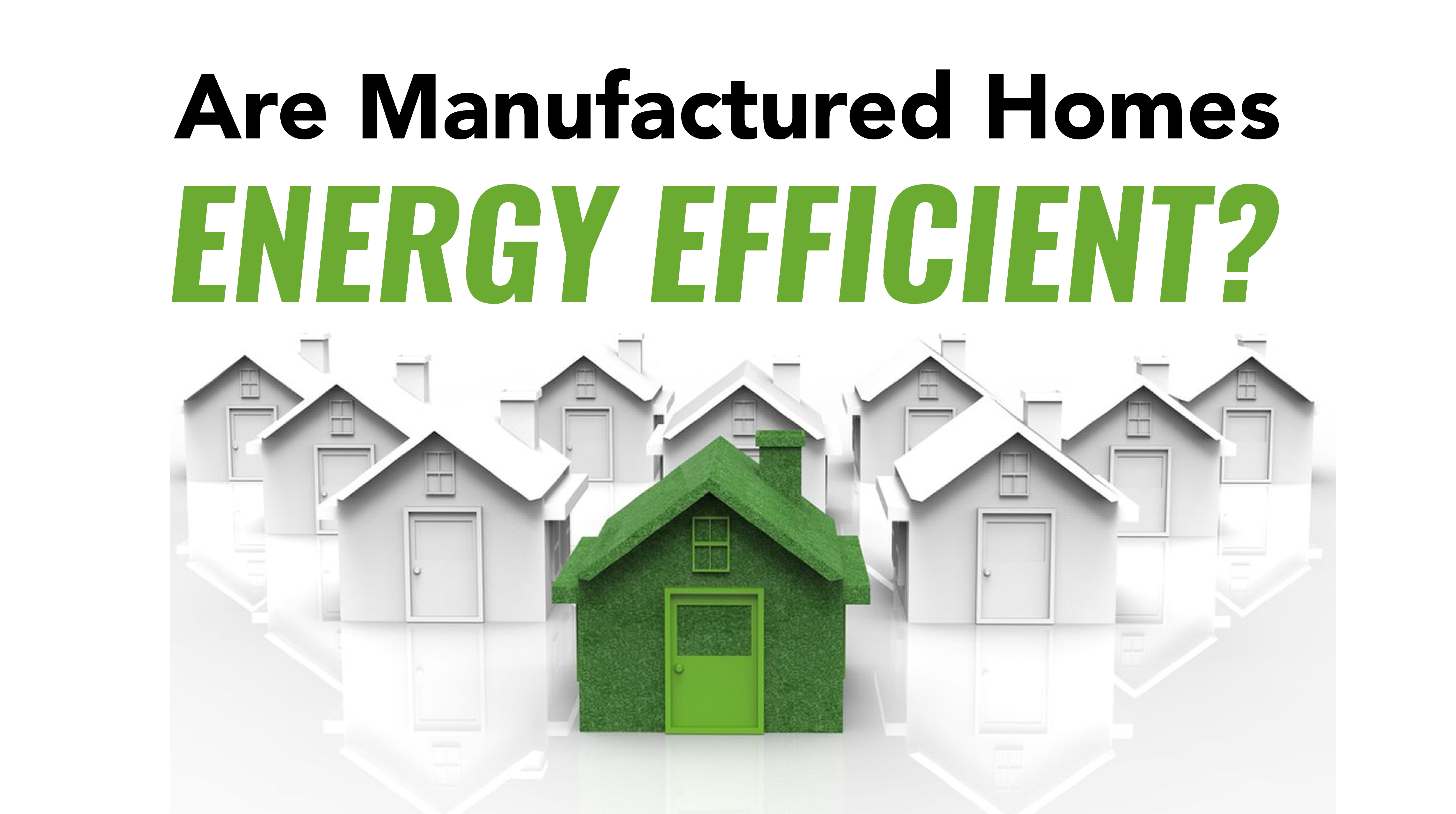Are Manufactured Homes Energy Efficient?
May 16, 2019

As more and more people feel the burden of high electric bills under the weight of growing climate change, they are beginning to ask lots of questions about energy efficiency. In particular, those who are considering alternative housing options will want to know whether or not manufactured homes are sufficiently energy efficient to reduce monthly living costs and environmental impact.
Older Manufactured Homes
It is important to note that older manufactured homes, built before 1976, may be lacking in many areas of energy efficiency. This is because they were built during a time when HUD didn't have any standards for building quality or performance when it came to manufactured buildings. As such, many of these older homes were lacking in insulation, did not have energy efficient appliances, plumbing fixtures, or windows, and may not have been properly sealed against the outside conditions. This was a real problem for homeowners.
Energy Efficiency in New Manufactured Homes
After 1976, HUD instituted a wide range of rules concerning manufactured homes designed to protect buyers. These new rules applied to everything from the underlying structure to the energy efficiency of the roofs and windows. These rules had an immediate impact on the design and quality of manufactured homes, but in recent years, these homes have grown even more efficient with a focus on sustainability and simpler living. Now, you can even find manufactured homes that carry an Energy Star rating from the moment they leave the manufacturing facility. This means that your brand new home meets all of the same energy-saving specifications as other site-built homes, and may even exceed expectations in many areas. Manufacturers have invested in using more modern materials that are resistant to weather change, while also making sure that new homes are fitted with the most efficient appliances on the market at any given time.
What to Expect From a Manufactured Home
All of the work that went into forming these new HUD and EPA rules has really paid off for today's future homeowners. Today, manufactured homes are designed with efficiency in mind, and the end result is that you save money up front on the cost of the house, as well as on your long term bills. Since these homes are built and assembled in a dedicated facility, manufacturers have been able to fine-tune some elements of the design that could not be addressed in a site built home. For instance, airflow between rooms is often maximized to ensure that all rooms of the house stay at approximately the same temperature, minimizing the need for costly ductwork to do the job. Likewise, most manufactured homes have turned to smaller on-demand water heaters that take up less space, and use less energy to give you only as much hot water as you actually need. No more spending money to heat water during the day when you're not around. Finally, special considerations have been given to newer door and window designs, bringing them up to par with the latest dual-pane insulated windows that is often used in the construction industry for site-built homes.
Ultimately, you will be amazed by how far the manufactured home industry has come in the last 50 years. Today's best-selling models go above and beyond, backed by a number of environmental and governmental agencies, to ensure consumers have a cost-friendly and reliable housing option. Home buyers who have fewer power and water bills to worry about can afford nicer homes or put more money aside for a rainy day. This shift in standards is also having a major impact on the reputation of manufactured homes among younger buyers who are more apt to accept alternative housing options than older generations. To learn more, visit Triad today and catch up on our blogs!
